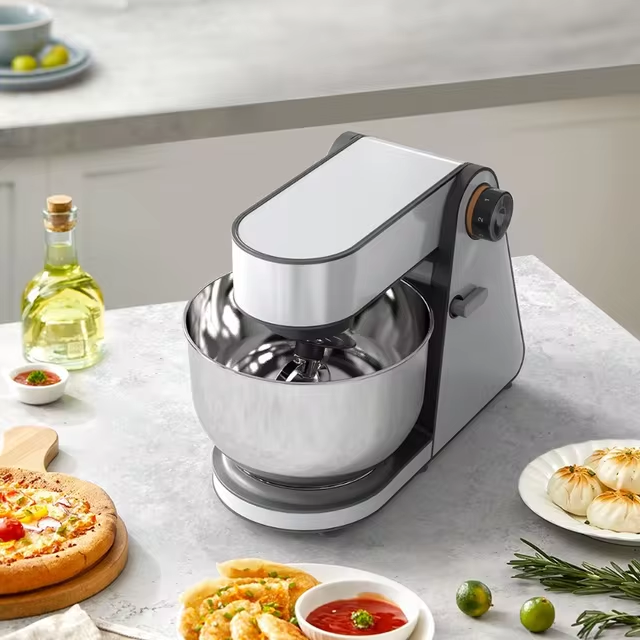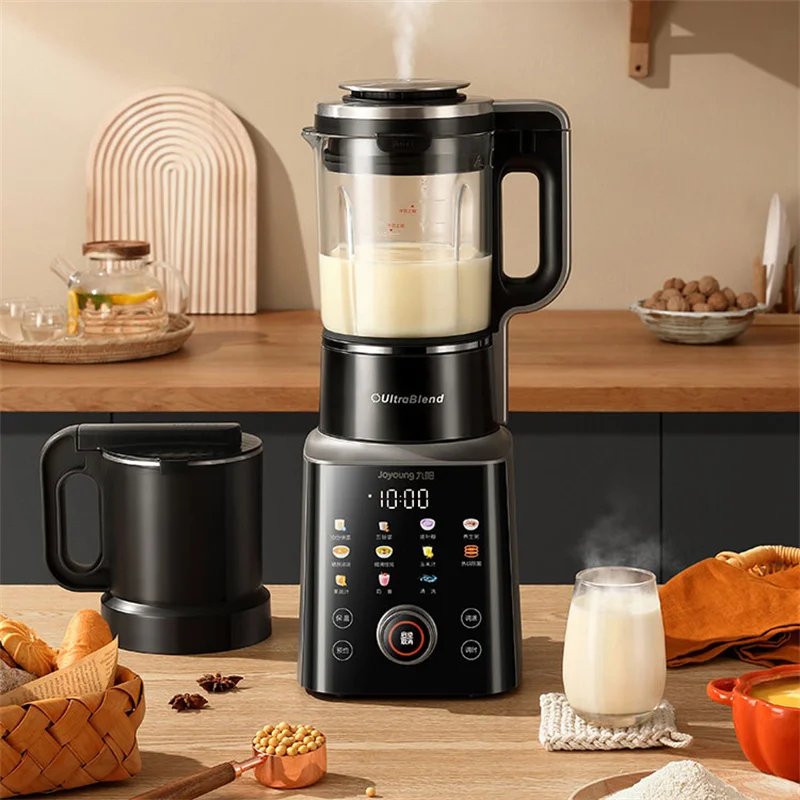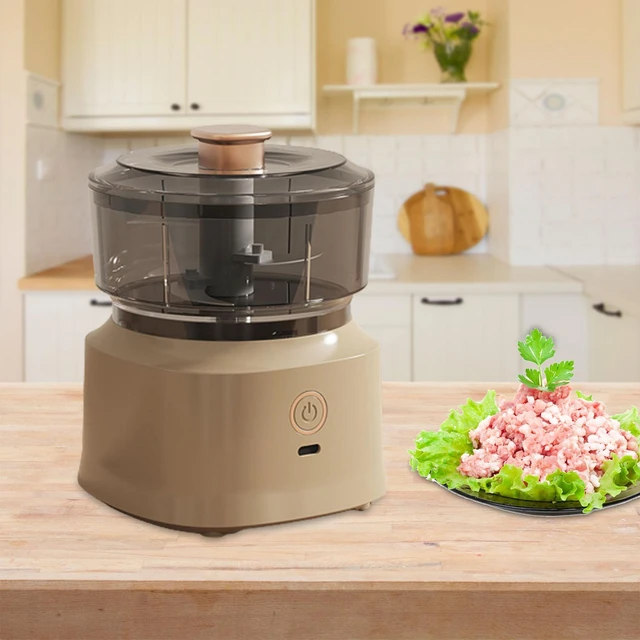
A Glimpse into the World of Food Processors
Basics and Key Functions
A food processor is more than an appliance. It’s a kitchen MVP that can chop, grind, shred, slice, and puree almost any food. Picture an ultra-sharp blade and a motor base— this dynamic duo turns tedious tasks into easy feats. The basic model comes with a bowl, lid, base, and blade. Imagine whipping up pesto, slicing veggies, or prepping homemade hummus with ease and speed.

Understanding Processor Attachments
Processor attachments add even more skills to your kitchen aid. Swap out blades for diverse tasks such as kneading dough for pies and bread or slicing potatoes for perfect gratins. These attachments transform the food processor into a versatile tool, ready to tackle numerous recipes. Whether you’re grilling cheese, making breadcrumb toppings, or preparing bean dips, the right attachment makes it simpler and quicker.
Deciding When to Invest in a Food Processor
Deciding to buy a food processor can feel like a big step. Consider what you’ll use it for. If you plan to chop, slice, or knead often, it’s worth considering. Think about your meals. Do you enjoy making dips like pesto or hummus? If yes, a food processor could be useful. It speeds up prep, making cooking more efficient.
Tailoring to Your Cooking Needs
When buying a food processor, think of your cooking habits. If you cook often or in large amounts, it’s helpful. For those who make complex dishes, it saves time and effort. If you’re tight on kitchen space, assess if you’ll use it enough. A multi-use tool like this must match your daily kitchen tasks to be worth it.
The Cost-Effectiveness of Owning a Food Processor
A food processor is an investment, but can save money long term. It can replace other tools, like graters and choppers. This means less to buy and store. Consider the cost versus how much you’ll use it. If it reduces time spent on cooking, it might be worth the price. Quality models last long, adding value to your purchase.
The Multifunctional Magic of Food Processors
Preparing Various Food Textures
Food processors do magic in the kitchen. They prepare different textures, from rough chops to fine purees. No matter the recipe, the food processor handles it. Think about rough-chopped nuts for baking or silky-smooth hummus for snacking. This tool adapts to your needs. It switches from shredding cheese to grinding breadcrumbs with ease. Hard vegetables or soft fruits, the processor deals with them quickly.
Rough textures work well for salads or stir-fries. A quick pulse gives you chunky pieces. For smooth pastes or sauces, hold the button longer. The result? Uniform purees without lumps. Use this to make perfect dips, like guacamole or salsa. A food processor is the tool for adjusting texture to your liking.
Saving Time with Meal Prep
A food processor is a meal prep champion. It saves time by doing the chopping, slicing, and grating for you. Use it to quickly prep ingredients for the week. Whiz through onions, carrots, and peppers for easy cooking later. It makes meal prep less daunting, especially when you’re short on time. With this tool, batch-cooking for family meals becomes quicker. It shreds blocks of cheese in seconds. It slices potatoes for gratins just as fast. No more manual slicing or dicing. That means less time in the kitchen and more time to relax or spend with family. What do you use a food processor for? Ask anyone who cooks a lot, and they’ll say everything. It streamlines your kitchen tasks, so you get extra time on your hands.
Food Processor Vs Blender: Making the Right Choice
Key Differences Between Appliances
When trying to decide between a food processor and a blender, it’s vital to understand their key differences. A food processor is designed to perform a wide range of tasks, such as chopping, grinding, shredding, and slicing. Commonly, it has various attachments, allowing for diverse kitchen prep work. In contrast, a blender excels in dealing with liquids, making it perfect for smoothies, soups, and sauces as it creates a uniform, silky texture.
Food processors come with blades that allow for coarse or fine chopping, while blenders are built with blades that liquefy ingredients. This means if you want to make chunky salsas or slice veggies, a food processor is your go-to appliance. If you’re keen on crafting smoothies or blending drinks, the blender is more suited to your needs.
Making the Best Purchase Decision for Your Kitchen
Choosing the right kitchen appliance comes down to your cooking and lifestyle habits. If you’re someone who loves to cook versatile dishes and hates spending too much time on prep, a food processor can be a lifesaver. It does the hard work for you, be it kneading dough, chopping nuts, or shredding cheese.
On the contrary, if you enjoy preparing a lot of drinks, purees, or smooth-textured soups, a blender might be more practical. It’s also easier to clean and could be a better option for smaller kitchens due to its generally more compact size.
Think about what you typically make in the kitchen and how a food processor or blender can make those tasks easier. The right choice should help you save time, reduce effort, and expand your culinary capabilities. Reflect on your kitchen space, the frequency of use, and the types of recipes you enjoy preparing when making your decision.
 Culinary Creations Made Possible by Food Processors
Culinary Creations Made Possible by Food Processors
Appetizers, Dips, and Spreads
Food processors do wonders for starters. They make quick, tasty dips like hummus or salsa. Think chunky or smooth textures, just as you like. Whip up spreads for bread or crackers in no time. For parties, you can make various appetizers fast. Guests may love the fresh tastes from your kitchen.
Cheese spreads come together in seconds. Just add your ingredients and blend. You can try different flavors with ease. Add nuts, herbs, or spices for extra taste. The possibilities are endless.
With a food processor, you can also create your own nut butters. These are healthier and more flavorful than store-bought. Customize them to your liking. They’re good for snacks or part of a meal. Perfect for anyone wanting fresh, homemade options.
Main Dishes and Sides Expertly Prepared
What do you use a food processor for when cooking main courses? It makes prep work a breeze. Use it to chop veggies for stir-fries or soups. It can grind meat for burgers or meatballs too. Savory dishes like falafel or veggie patties are easier to make.
When prepping sides, the food processor shines. It slices potatoes for au gratin or scalloped dishes perfectly. Shave time off making cauliflower rice or coleslaw. Side dishes look professionally made with little effort.
It can also mix ingredients for stuffed peppers or squash. Fill them with evenly chopped veggies, meats, or grains. A food processor helps you make filling and delicious mains and sides. It’s a great way to impress guests or treat your family.
Care and Maintenance of Your Food Processor
Cleaning and Storage Tips
To keep your food processor in top shape, follow simple cleaning and storage practices. After use, dismantle the processor and hand wash all parts, except the base with the motor. A gentle scrub with soapy water cleans blades and bowls well. Make sure to dry pieces thoroughly before reassembling. For storage, keep the processor in a dry place. Use the original box or a cupboard to protect it from dust and damage.
Longevity and Appliance Care
To ensure your food processor lasts, use it properly and maintain it regularly. Avoid overfilling the bowl or forcing the motor to grind hard foods at high speeds. This can wear it down. Sharpen blades to maintain their chopping efficiency. Check for any cracks or wear in the bowl and blades. Replace worn parts promptly to prevent accidents and further damage. With proper care, your food processor should serve well for many years.
 Shopping Smart: Choosing the Right Model for You
Shopping Smart: Choosing the Right Model for You
When picking a food processor, smart shopping is key. You want the best fit for your kitchen. Think about size, features, and how you’ll use it. Will you make large batches or small dips? Pick a size that matches your cooking style.
Considering Size and Capacity
Size matters for food processors. They range from small to large. Large models handle big batches. Small ones are good for quick jobs and take up less space. Think about what you cook. If you cook for many, go big. For solo meals or small spaces, a smaller one works well.
Evaluating Advanced Features and Accessories
Modern food processors come with extras. Look for useful features. Some have dough blades, others offer various slicing options. Think about what you make. If you bake often, choose a model with a dough attachment. For those who love slicing and dicing, multiple cutting options are helpful. Assess these features to get the most from your purchase.





